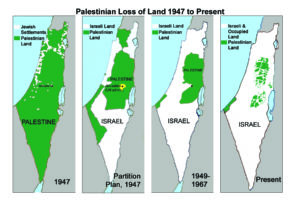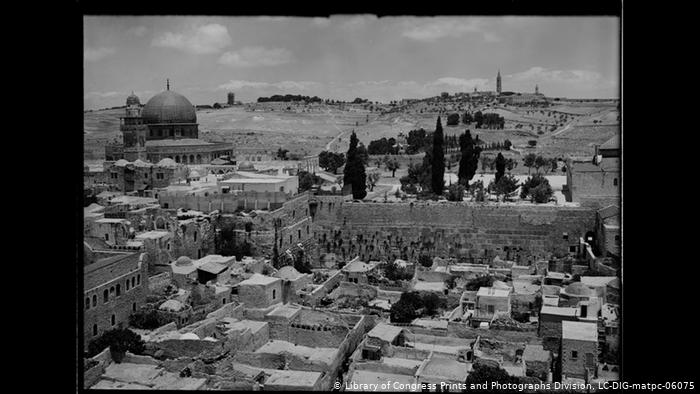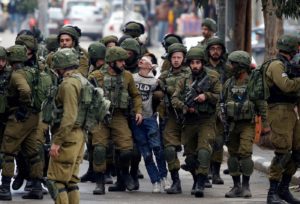A (hopefully) teachable moment for a journalist whom we count on to report facts, not “alternative facts.”
A respected columnist, misinformed about history and current events in Israel, has unfortunately shared with her readers several inaccuracies about Israel and the people of Palestine. Her misunderstandings are not uncommon.
Below are some corrections.
by Kathryn Shihadah
Dear Ms. Star Parker,
You are an articulate columnist, author, and political activist, and you give a voice to conservative Black Americans. When you take on the liberal agenda, you often use compelling arguments.
But your take on the Ben & Jerry’s boycott of Israeli settlements, I’m sorry to say, is inaccurate. Your readers and fans deserve to know the truth – and so do you.
I’ve taken the liberty of copying several passages from your article, and providing more factual information – fully cited for your convenience. Please take a few minutes to check it out.

Ms. Parker, you open your op-ed by stating:
“Ben & Jerry’s, noted for its ice cream made from ‘contented cows,’ has produced not such contented consumers in many circles following its announcement to stop selling its ice cream in Israel’s West Bank and in East Jerusalem.
“Although the announcement calls these areas ‘occupied territories,’ more accurate would be to describe their status as “disputed” territories regarding Israel’s sovereignty.
“These are areas captured by Israel after the Six-Day War in 1967.”
Occupation and land confiscation
CORRECTION: Ben & Jerry’s will stop selling its ice cream, not in “Israel’s West Bank,” but in the Palestinian West Bank – in those parts of the West Bank where citizens of Israel have taken over land that has belonged to Palestinian families for generations. Ben & Jerry’s is also halting sales in Palestinian East Jerusalem, where Palestinian lands and homes are also being confiscated and given to Israeli settlers.
Around 660,000 Israelis live on Palestinian land – in settlements that, as the Red Cross and others note, are illegal under international law (see also this). Ben & Jerry’s boycott is a statement about the importance of law, human rights, and self-determination. I’m sure these issues matter to you, too.
Also, you should know that Israel actually took the West Bank, East Jerusalem, and Gaza in a war of aggression (also see this and this), which is prohibited under the UN Charter.
International law and the international community are in agreement that “occupied” is the correct descriptor for this land – not “disputed.” The United Nations, the Red Cross, the International Court of Justice, and even the US and the Israeli Supreme Court agree that the Palestinian territories are occupied. Only Israel’s executive and legislative branches dissent.
For 54 years, Israel’s occupation of the West Bank, including East Jerusalem, has generated systematic human rights violations against Palestinians who live there. Palestinians engage in resistance against both the occupation and the human rights violations (in Gaza, they also protest against Israeli airstrikes and a 14-year-long blockade). They are guaranteed the right to resist under international law. Israel, on the other hand, does not have the right to occupy Palestinian land for over half a century.
 Your article, Ms. Parker, continues:
Your article, Ms. Parker, continues:
“Let’s keep in mind that Israel has been in a battle for survival since its founding in 1948.
“Israelis are survivors, not conquerors. If not for incessant hostility by its Arab neighbors, the Six-Day War, in which these territories were captured, never would have taken place.”
No “battle for survival”
CORRECTION: Ms. Parker, Israel is a conqueror, and its survival has never actually been in question: it has always been militarily superior to its neighbors – neighbors who would have no need to be “hostile” save for Israel’s aggression.
Israel was birthed in the ethnic cleansing of Palestinian Christians and Muslims: 750,000 indigenous men, women, and children were summarily exiled from their homeland so that Israel could have a Jewish majority.
Israel has also taken aggressive action against its neighbors: Lebanon, Syria, Egypt, and Jordan to name a few.

Since then, Israel has grown to be a military superpower (thanks in great part to US military aid that may reach $20 million a day in direct and indirect assistance).
In the International Criminal Court, Israel currently faces accusations of war crimes against Palestinians; the United Nations has censured Israel for its actions hundreds of times.
Ms. Parker, your article references a familiar myth:
“Over 100 years ago, when Jews started returning to their ancient homeland, there was nothing there. As author and businessman George Gilder has written, from 1921 to 1943, the new Jewish immigration increased the number of enterprises in the region fourfold, the number of jobs tenfold, and the amount of capital investment one hundredfold.”
Quick history lesson
CORRECTION: Ms. Parker, your choice of reference material, George Gilder’s “The Israel Test: Why the World’s Most Besieged State is a Beacon of Freedom and Hope for the World Economy,” is unfortunate. Gilder’s work is neither scholarly nor reputable. His declaration, that Palestine was a wasteland before the arrival of Jews, is refuted by authentic historians and primary sources.
Jews arriving in the late 1800s, in what was then known as Palestine, found a population of over 460,000 that was 97% Christian and Muslim Palestinians, and 3% Jewish Palestinians. It was neither a wilderness nor a “land without a people” (a popular phrase in early Zionism to describe the historic land of Palestine). Palestine at that time was a cultured region, and enjoyed great prosperity (check out these photos, for example).
By 1930, Britain’s high commissioner for Palestine, John Chancellor, described it as a flourishing region in which all arable land owned by indigenous Palestinians was inhabited and farmed. Less than 5% of this land was Jewish-owned (by this time, the population of the region was just above 1 million, of which Jews made up 17%).







